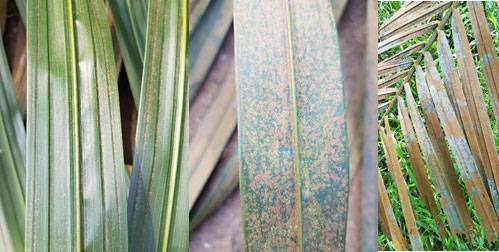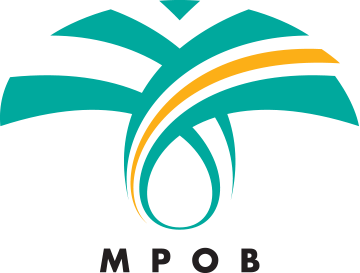Biology and Symptom
The disease attacks mature palm trees, especially in plantation areas near roadside or dusty areas. The spread of the disease is through spores released by algae, either through wind or rainwater. Symptoms of the disease can be seen by the presence of algae of various colors on the upper surface of the leaves of old fronds. Usually, the color of the colony is a brownish red that grows in patches and will eventually coalesce into larger patches. The shape of the colony is round and sometimes grows elongated. When these colonies are scraped, no damage occurs to the leaves, but the color of the leaves turns a pale green. This color change is due to the obstruction of algal colonies that do not allow sunlight to reach the leaf surface.

Causal
The main cause of this disease is a type of algae, namely Cephaleuros sp. However, recent study in several place in Perak, Johor and Terengganu show the spots are the colonies of Phycopeltis sp. This species of algae is non-parasitic and will not cause direct damage to plant tissue.
Disease Management and Control
Removes the infected palm leaves to avoid infection to healthy trees. Adequate ventilation and sunlight on the farm should be emphasized.
